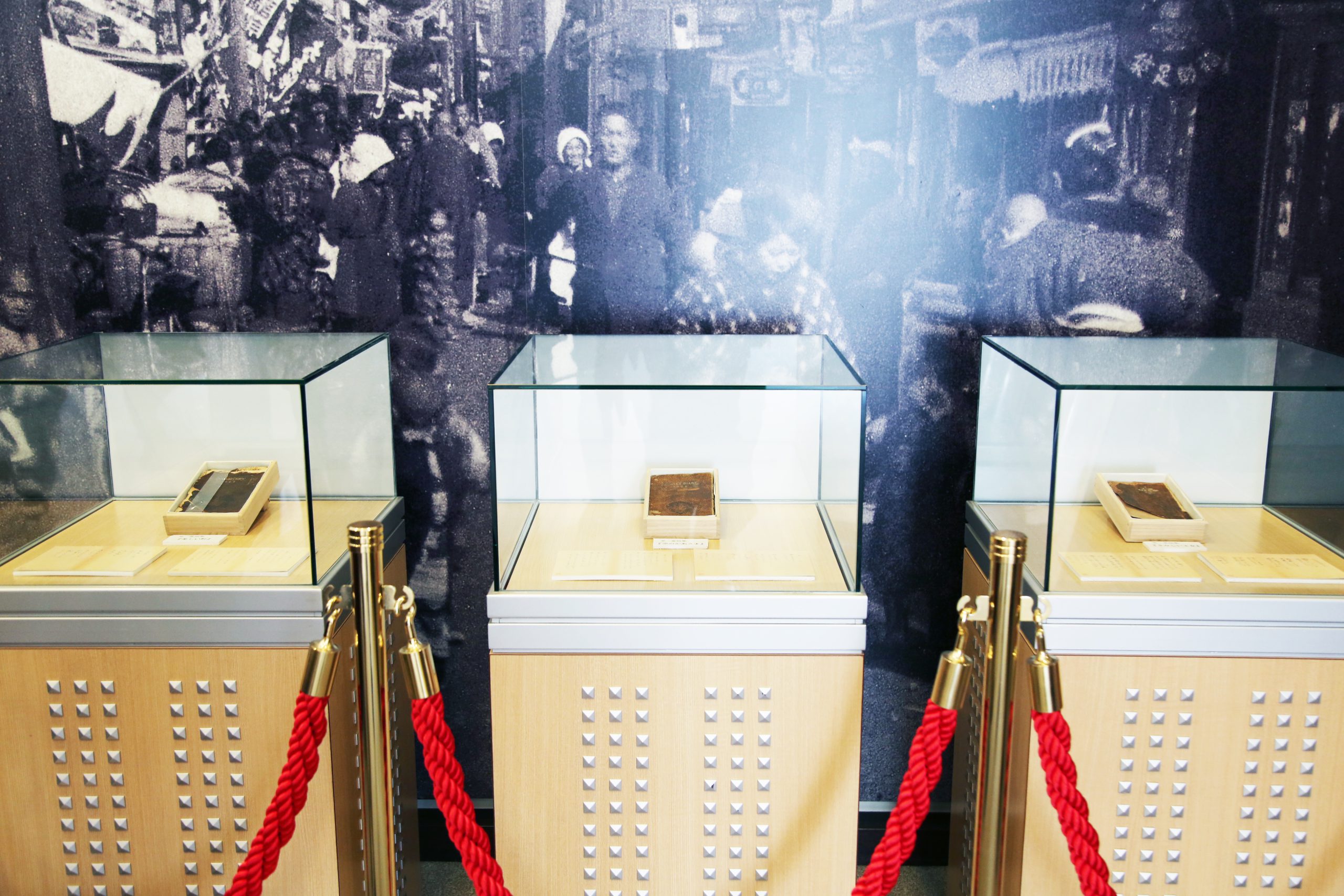- >
- Nanavi News
- >
- Original copies of Misuzu Kaneko’s “Three Notebooks” are unveiled.
Original copies of Misuzu Kaneko’s “Three Notebooks” are unveiled.
-
Last updated:
Apr 12, 2019
-
About the writer:
Nagato Tourism Convention Association

The actual notebook is open to the public for one day only.
April 11, the birthday of the nursery rhyme poet Misuzu Kaneko.
Opened on the same day in 2003, the "Kaneko Misuzu Memorial Museum" in Senzaki celebrated its 16th anniversary.

On this occasion, the actual three notebooks, which are Misuzu's posthumous collection of manuscripts, were shown to the public.
These were entrusted to Mr. Setsuo Yazaki, the current director of the Misuzu Kaneko Memorial Museum, by Mr. Masasuke Ueyama, Misuzu's younger brother. Due to their deteriorated condition, it was thought that it would be difficult to display them at the museum, but with the introduction of a new cabinet, the museum has now been able to make this happen.
The notebook contains 512 pieces, all handwritten by Misuzu herself.

The first book is titled "Beautiful Town" and the second "Sora no Kaasama," and contains many now-familiar works, including "The Big Fishery" and "The Star and the Dandelion.
These two books are clean and neatly written, and although it is difficult to even open them today, they are lined with beautiful vertical writing on plain paper.


The third book, "The Lonely Princess," is one of the true originals, as it shows traces of textual corrections. It contains the poems "Me, a Little Bird, and a Bell" and "Kodama desu ka?
The writing pressure is also different from that of the two clean copies, and some of the strokes have been transferred to the back of the book. Some 40 poems are marked with an "X" or "△," which may have never appeared in the world without this notebook.

The museum was filled with students from the local Senzaki Elementary School and other local residents, as well as fans who had flown in after receiving information from newspapers and the radio. On this day, the museum extended its opening hours and remained open until 7:00 p.m., but there were still some who gazed at their notebooks until the very end of the day, wanting to "burn it into their eyes.


In front of numerous members of the press, Director Setsuo Yazaki said, "I would like visitors to feel the weight of the 512 poems actually written by Ms. Misuzu's hand through the three notebooks she held in her hands for the first time in 1982. Ms. Misuzu's poems can be read deeply by people of any generation, and I hope you will read them aloud and feel the same breath", he replied.

The museum is also selling postcards based on the notebook.
Hearing the various stories behind the notebooks made me feel the weight and depth of the letters more than ever.

Commemorative admission ticket for "Stars and Dandelions"
Commemorative admission tickets are distributed from April 11 each year.
Some visitors came to the museum even before it opened, hoping to get a ticket for "No. 1.

This admission ticket can also be used as a "bookmark" to be inserted in a book. This time, a poem from "The Star and the Dandelion," known for the phrase "Though you can't see it, it's there, even though you can't see it. The poem "The Star and the Dandelion" is well-known for its phrase, "Though you can't see it, it's there, even though you can't see it.

As you proceed down the orderly path with your admission ticket in hand, you will hear children's voices.


This is a mini-concert in which children attending the Misuzu Nursery School sing poems by Misuzu.
The energetic singing of the children brought smiles to the faces of the visitors.

Poetry and Flower Workshop" held at the same time
On the second floor of the museum, a limited number of workshops will be held on the same day.
This is a workshop where postcards of poems written by Misuzu are framed and decorated with flowers.

The instructor was Yuki Suenaga, a floral designer in the city who runs "Flower Design Yuki.
Even if you use the same materials, everyone's work turns out differently, and that's part of the fun of flower arranging. That is one of the joys of flower arrangement," he said, as he began to work in a friendly atmosphere.

The first step is to choose the materials.
You pick up the postcard, the frame, and the flowers, imagining the finished product.


Misuzu's poem, gorgeously decorated with flowers.
The result is a beautiful interior that is unique to this location.

This year on April 11, there were more visitors than in previous years.
It was a day when Ms. Misuzu's presence grew in the hearts of many people.
The museum hopes to display the notebook every April 11 in the future. Like the swallows that nest at the exit of the memorial hall and return every year, we would be happy to see them again at this location.



